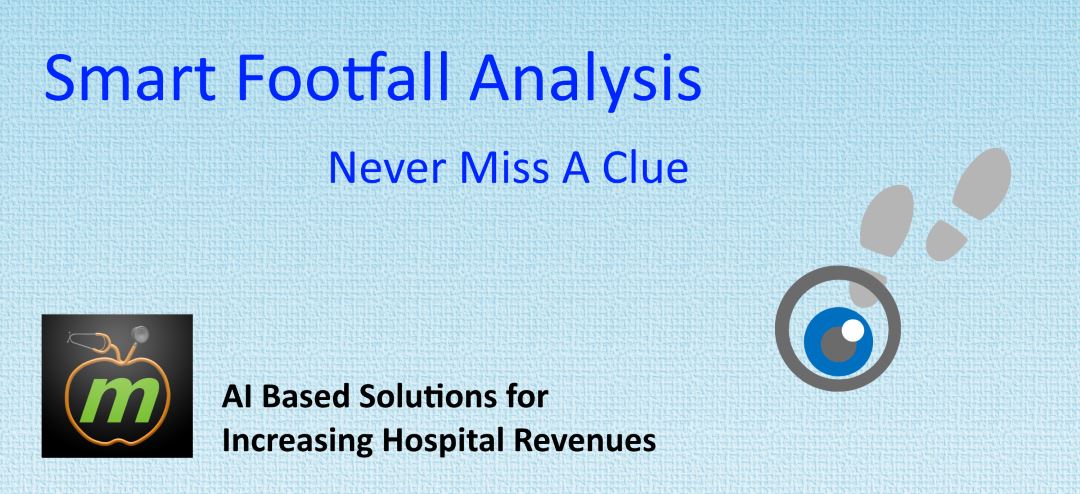Contents
Online and Offline Marketing
Hospitals, like any other business, need to market themselves online as well as offline to attract footfall. Facebook, Google etc. are prime examples of online marketing – they even provide advanced tools for measuring conversion, ROI etc. for digital services being promoted. For brick-and-mortar service like healthcare, however, it is difficult to automatically close the loop.The other traditional methods are the offline-marketing channels such as billboards, radio, print-ads etc. If the demographic-data with the hospital is reasonably clean and structured, then some broad inferences can be drawn about success of the campaigns.
Footfall Analytics
While hospitals do not know the patients’ digital ID’s, they do have their address (general-location) and other demographic data. Charting the trends on various demographic factors can help identify spikes – jumps and drops in daily footfall. When correlated with the timeline of online and offline marketing-campaigns, the analysis can reveal the effectiveness of a given campaign.So why not just jump to it using spreadsheets? Well, things in real world are rarely that simple. To give you a flavor:
- Address-data is not always “clean” and structured to the expectation. A lot of ambiguity and errors can make the analysis useless.
- Too much data: Plotting footfall numbers against dates might sound simple enough but when we get into possible permutations for comparison then even a modest numbers can be too much to analyze manually.
AI to the Rescue
While a disciplined approach to data-entry is always welcome, our system can handle un-structured address-data and extract useful location-data. Once the data is sanitized, it becomes amenable to statistical analysis.Our system also takes into account the clinical data to detect anomalies in numbers against various demographic factors. The anomalous jumps, coupled with trend-charts help identify impact of campaigns.
 Not just this, our system also automatically compares useful permutations for any anomalies in trends and displays them for human analysis. For example, footfall from a particular area/location may not match the global-trends. The reasons may not be known to the system but it helps humans zero-down on anomalous behavior very quickly.
Not just this, our system also automatically compares useful permutations for any anomalies in trends and displays them for human analysis. For example, footfall from a particular area/location may not match the global-trends. The reasons may not be known to the system but it helps humans zero-down on anomalous behavior very quickly.
How do we do it?
The system uses Seasonal Decomposition to extract seasonality, trend and residue. Outlier analysis on residue gives us unusual spikes in footfall.The trend, averaged over month, gives a profile of the footfall. This is compared against footfall data filtered on other demographic parameters. If the shape of the two trend-curves is sufficiently different then the extreme differences are captured and presented to user for further analysis.
Summary
Author Rating





Aggregate Rating
5 based on votes
Brand Name
mTatva
Product Name
Health-PIE